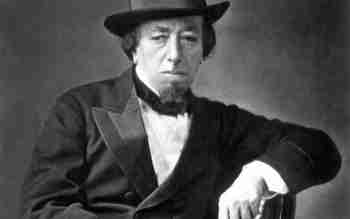The Sephardi and the keys to Spain
In the time of the Romans, there were no Jews registered in the United Kingdom in comparison with other countries, Spain, Italy or France.
The first Jews arrived after the conquest of Normandy in 1066, William of Normandy invited Jewish financiers from Rouen in northern France to come to England.

They prospered in England, as financiers initially but finally came against prejudice from some nobles in debt. It ended with the expulsions of the Jews from the UK in 1290. In later centuries, they are mentioned as doctors or musicians in Italy.
After the expulsion of the Jews from Spain in 1492 and from Portugal in 1497, and the establishment of the Spanish Inquisition, a group of Iberian businessmen established in Great Britain, mostly Christians who would become converted into Jews.
In 1656, Rabbi Manoel Dias Soeiros from Amsterdam, where a community of Marranos Jews had been established, fleeing from the inquisition and returning to Jewism, visited England to try to persuade the English Government to allow entry for the Jewish.
They met Oliver Cromwell, Lord Protector, who was favourable to the idea, and after a commission decided to deliberate the problem, they announced that the Expulsion Decree in 1290 was a Royal Decree, and had no longer relevance with the lack of power.
The Portuguese merchants immediately opened a synagogue with the Rabbi Manasé often in attendance. The Jewish community in England was established by the Sephardi, and over the years found great support from Spain and Portugal, trying to flee the Inquisition.
Many of the Portuguese traders were rich and obtained highlighted positions in British society. The Sephardi community prospered and opened their first synagogue in Bevis Marks Street in London in 1701 under the name Shaar Hashomayim Congregation.
There were refugees from Poland and Germany who were helped by the Sephardi, but they continued to dominate the British Jewish community for more than a hundred years, with surnames such as Montefiore, Disraeli, Mocatta, Lindo and De Costa. The Disraeli family obtained ministries which became of great importance in British history.
It was not until the XIX century when an avalanche of refugees from Poland and Eastern Europe changed the demographic composition of the British Jews, and their families, as the Rothschild became prominent. The Sephardi community continued to occupy important places in British society, but the new arrivals were the greater in number.
Around 1912, a new affluence of Sephardi arrived from Turkey and Greece, mostly Salonica, given the decline of the Turkish empire which had taken Salonica for the Greeks, which produced a large exodus of Safari arriving in France and England. These new arrivals in England formed a separate community from those at Bevis Marks, but accepted the superiority of the latter.
With the help of Bevis Marks and the David Sassoon Foundation, the eastern community constructed their own synagogue at Holland Park, London in 1928. Although both Jewish communities were originally from Spain and Portugal, it was the synagogue at Holland Park which maintained contracts across both.
Now there are 10 Sephardi Synagogues in Great Britain, most in London, but the Bevis Marks continues to dominate the Sephardi society on the British Isles.
